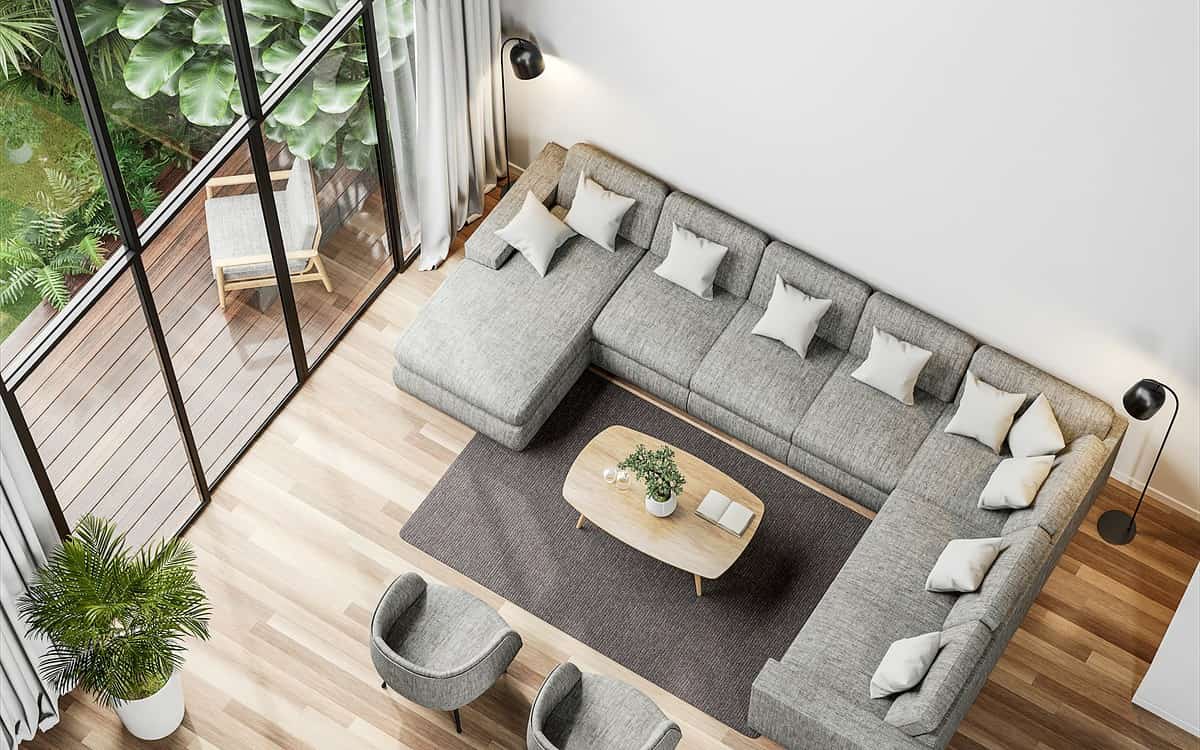When it comes to upgrading your floors, luxury vinyl plank (LVP) flooring offers a great combination of style, durability, and affordability. Whether you’re replacing old carpet or existing vinyl flooring, budgeting for new luxury vinyl flooring is an important step in the process. With so many options and installation costs to consider, here’s a helpful guide to make the process easier and more manageable. At Flooring RVA, we’re here to ensure that you get the best value for your investment in luxury vinyl installation.
1. Assess Your Space and Needs
Before heading to a luxury vinyl flooring store, the first step is to measure the area you want to update. Accurate measurements will give you a clear idea of how much flooring you’ll need and help you avoid overspending on extra materials. Don’t forget to account for any areas that may require special attention, such as corners or difficult-to-reach spaces. If you’re replacing existing vinyl flooring, you’ll need to factor in the removal costs as well.
You’ll also want to consider the type of vinyl plank flooring you prefer. There are many designs, colors, and textures available, so you can find something that matches your aesthetic while staying within your budget. Whether you choose a traditional wood look or a more modern, contemporary style, there’s an option for every taste.
2. Understand the Costs of Luxury Vinyl Flooring
Luxury vinyl plank flooring is an affordable option for homeowners who want the look of hardwood or stone without the high price tag. The cost of luxury vinyl flooring can vary depending on factors such as the quality of the material, the brand, and the thickness of the planks. Generally, LVP is more cost-effective than hardwood or stone alternatives, making it a great choice for those working with a specific budget.
It’s important to visit a reputable luxury vinyl flooring store to compare prices and find the best deal for your needs. A trusted flooring store will have knowledgeable staff who can walk you through the available options and help you select the right type of vinyl for your space.
3. Account for Flooring Installation Costs
While luxury vinyl flooring is relatively easy to maintain, it’s still essential to budget for vinyl plank installation if you’re not planning to do it yourself. Hiring professional installers ensures that the job is done correctly, giving you peace of mind and ensuring that your new floors will last for years to come.
Installation costs typically depend on the complexity of the job, the size of the area, and the type of vinyl plank flooring you’ve selected. For example, intricate designs or large spaces might require more time and effort, which could increase labor costs. Your flooring installation company may charge by the square foot or offer a flat fee based on the size of your project.
4. Consider DIY Vinyl Plank Installation
If you’re on a tight budget and have some basic tools and skills, you might consider installing the vinyl plank flooring yourself. Many types of vinyl, including click-lock vinyl plank flooring, are designed for DIY installation. With the right tools—a utility knife, a tape measure, a level, and a tapping block—you can save money on labor costs.
However, DIY installation isn’t for everyone. If you’re not comfortable with the process, it’s best to hire a professional for vinyl plank installation. Improper installation could result in gaps or other issues that might require costly repairs down the line.
5. Budget for Additional Materials and Tools
When planning your budget, make sure to include any additional materials you may need for your luxury vinyl flooring project. For instance, if you’re replacing existing vinyl flooring, you might need tools for removal, such as a pry bar or scraper. Additionally, some flooring projects require underlayment to help with sound absorption and moisture protection.
Don’t forget about the small but essential items, such as transition strips, baseboards, and adhesive (if needed). These extra supplies can add up, so it’s best to include them in your initial budget to avoid any surprises.
6. Factor in Existing Vinyl Flooring Removal
If you’re replacing old flooring, it’s important to factor in the cost of removing the existing vinyl flooring. The removal process involves pulling up the old flooring, disposing of it properly, and preparing the subfloor for new installation. Depending on the condition of your existing flooring, this can sometimes be a straightforward process or require additional time and labor.
Some luxury vinyl flooring stores may offer removal services as part of a bundle, so it’s worth asking about package deals. This can save you time and effort, and allow you to focus on the installation rather than dealing with the old floor.
7. Determine How Much Flooring You Need
Once you’ve measured your space and decided on the type of vinyl plank flooring you want, it’s time to calculate how much you’ll need. Be sure to account for any mistakes that may happen during installation, which is why most experts recommend purchasing 5–10% more flooring than necessary. This extra material can cover any cutting mistakes or changes you may want to make later.
Luxury vinyl planks come in a variety of sizes, so it’s important to factor in the size of the planks when calculating your total amount of flooring. If you’re replacing existing vinyl flooring, make sure the new planks match your current layout for a seamless finish.
8. Be Aware of Hidden Costs
It’s easy to overlook certain costs when budgeting for a flooring project. For instance, some homes require additional subfloor preparation before you can install vinyl flooring. If the subfloor is damaged, uneven, or lacks proper moisture protection, it may need to be repaired or leveled, which can increase the overall cost of your project.
Similarly, if you have any tricky areas in your home, such as uneven walls or narrow spaces, it may take extra time and effort to properly fit the flooring planks. Discuss these potential challenges with your flooring installation expert so they can provide a more accurate estimate.
9. Think Long-Term About Value
When budgeting for your new floors, it’s important to keep the long-term value of your investment in mind. Luxury vinyl flooring is not only a stylish addition to your home, but it’s also durable, easy to clean, and resistant to wear and tear. Over time, you’ll enjoy the beauty of your new floors without the constant worry of damage or fading.
Additionally, luxury vinyl plank flooring can increase the overall value of your home. This makes it a smart investment, especially if you plan to sell your home in the future. When budgeting for your new floors, it’s worth considering the return on investment (ROI) of this flooring type.
By carefully planning your budget and considering all aspects of luxury vinyl plank flooring, from the materials to the installation process, you can make informed decisions that will result in beautiful, functional floors that will last for years.






